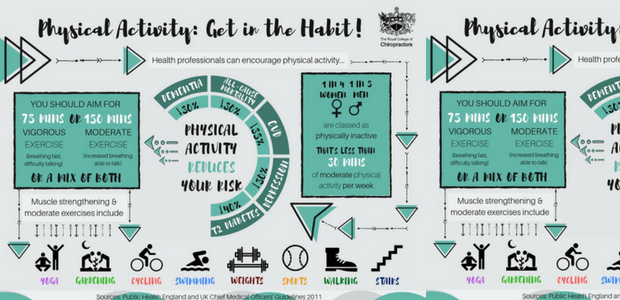Tackle Neck And Back Pain By Discovering The Everyday Routines That Might Be Creating It-- Straightforward Adjustments Might Lead To A Pain-Free Way Of Living
Tackle Neck And Back Pain By Discovering The Everyday Routines That Might Be Creating It-- Straightforward Adjustments Might Lead To A Pain-Free Way Of Living
Blog Article
Posted By-Mckay Svenningsen
Keeping appropriate posture and preventing common risks in day-to-day activities can significantly influence your back health and wellness. From how you sit at your desk to just how you raise hefty items, little modifications can make a huge distinction. Picture a day without the nagging back pain that prevents your every action; the option may be easier than you think. By making a few tweaks to your daily behaviors, you could be on your means to a pain-free presence.
Poor Position and Sedentary Way Of Life
Poor pose and a less active lifestyle are 2 significant contributors to neck and back pain. When you slouch or inkling over while resting or standing, you placed unnecessary strain on your back muscle mass and spine. This can result in muscular tissue imbalances, tension, and ultimately, persistent neck and back pain. Furthermore, sitting for extended integrative care without breaks or exercise can compromise your back muscle mass and result in tightness and discomfort.
To deal with bad stance, make a mindful initiative to rest and stand right with your shoulders back and lined up with your ears. Bear in mind to keep your feet level on the ground and stay clear of crossing your legs for prolonged durations.
Including lower back injury extending and enhancing exercises right into your daily routine can also aid boost your stance and reduce neck and back pain related to a less active way of living.
Incorrect Training Techniques
Improper lifting methods can significantly add to pain in the back and injuries. When you raise heavy objects, remember to flex your knees and use your legs to raise, instead of relying on your back muscular tissues. Avoid twisting your body while lifting and maintain the item near to your body to lower strain on your back. It's essential to maintain a straight back and avoid rounding your shoulders while lifting to avoid unneeded stress on your spinal column.
Constantly examine the weight of the object prior to raising it. If it's as well heavy, ask for aid or use tools like a dolly or cart to transport it securely.
Keep in mind to take breaks during lifting tasks to offer your back muscles an opportunity to relax and stop overexertion. By applying appropriate lifting methods, you can avoid back pain and reduce the risk of injuries, guaranteeing your back remains healthy and balanced and strong for the long-term.
Lack of Normal Exercise and Extending
A sedentary way of living lacking routine workout and extending can dramatically contribute to back pain and discomfort. When you don't take part in exercise, your muscles end up being weak and stringent, causing poor stance and enhanced strain on your back. Routine workout helps strengthen the muscular tissues that support your spinal column, improving stability and lowering the risk of neck and back pain. Incorporating extending into your routine can likewise boost adaptability, avoiding rigidity and pain in your back muscle mass.
To stay clear of back pain brought on by an absence of exercise and extending, go for at least thirty minutes of modest exercise most days of the week. Include workouts that target your core muscles, as a strong core can help ease pressure on your back.
In addition, take breaks to extend and move throughout the day, particularly if you have a desk work. Simple stretches like touching your toes or doing shoulder rolls can assist alleviate stress and prevent neck and back pain. Prioritizing routine workout and stretching can go a long way in maintaining a healthy back and decreasing discomfort.
Conclusion
So, remember to sit up right, lift with your legs, and stay energetic to stop back pain. By making simple adjustments to your daily practices, you can avoid the discomfort and restrictions that include back pain. Look after your back and muscles by exercising excellent stance, appropriate training techniques, and routine exercise. Your back will thanks for it!
